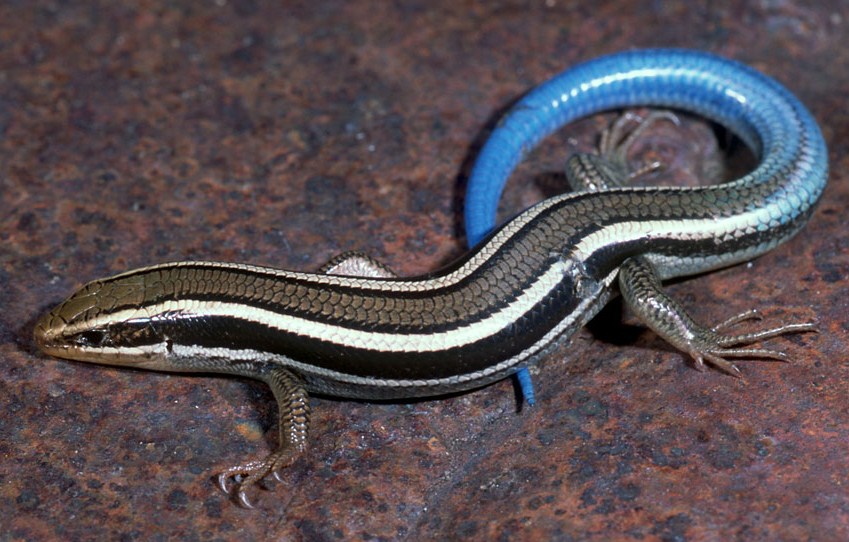There are 8,240 species of reptiles in the world, inhabiting every continent except Antarctica.
Though our students seldom see them because of their timid nature, reptiles of different shapes and sizes inhabit many parts of our forest. If you’re lucky, though, you might get to see some of our tinier friends dashing from bush to rock on sun soaked hills as if they’re late for a party. Here are a couple of local examples of lizards and some fun facts you can share with students and adults alike
The Alligator Lizard

The alligator lizard has a range that stretches from Washington all the way down to Baja California. It can grow anywhere between 3 and 8 inches with a tail up to twice the size of its body, and moves in an undulating motion similar to a snake.
Alligator lizards are mainly diurnal (active during the day) and feed primarily on insects, spiders, and tadpoles. Many of these lizards have forked tongues; this helps them to actually smell better!

One special adaptation of the alligator lizard is its ability to detach its tail when attacked by a predator. The lizard pops its tail off causing it to wiggle around; while the predator attacks the tail, the rest of the lizard to is able to scurry away to safety. While the lizard escapes with its life, this defense mechanism is also costly which could cause it to miss a reproductive season. These tails do regenerate, though they often are never as nice as the original.
The Western Skink

The western skink is a fascinating and beautiful lizard that lives in grass and open woodlands. Juvenile skinks have a bright blue tail which fades over time and could be used to distract predators since the western skink also has the ability to detach its tail when attacked. However, there are scientists that wonder if would be more effective to be entirely camouflaged and believe there might be another explanation for this eye-popping tail.
Like the alligator lizard, the western skink is carnivorous, feeding on caterpillars, grass hoppers, crickets, and insect larvae. One uncommon behavior of the western skink is that once a female lays her eggs, she actually stays with them to protect the eggs from predators; most lizards don’t do this.

There are many different types of lizards in our forest. Some big, some small, some colorful and some highly camouflaged that serve as a reminder to the towering giants that came before us. So the next time you see one of the tinier creatures scurrying through the woods, take a moment to think about some of the interesting adaptations that allow them to still live in our world today.

At High Trails Outdoor Science School, we literally force our instructors to write about elementary outdoor education, teaching outside, learning outside, our dirty classroom (the forest…gosh), environmental science, outdoor science, and all other tree hugging student and kid loving things that keep us engaged, passionate, driven, loving our job, digging our life, and spreading the word to anyone whose attention we can hold for long enough to actually make it through reading this entire sentence. Whew…. www.dirtyclassroom.com

Comments are closed.